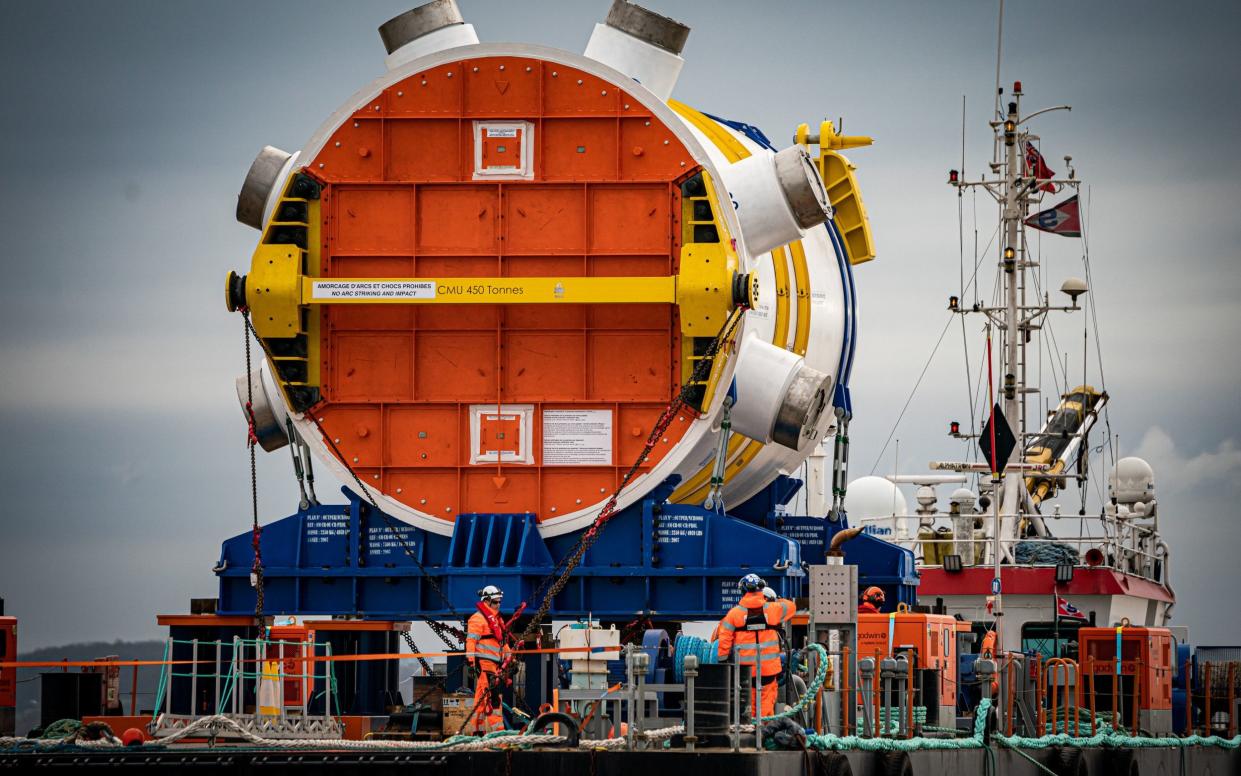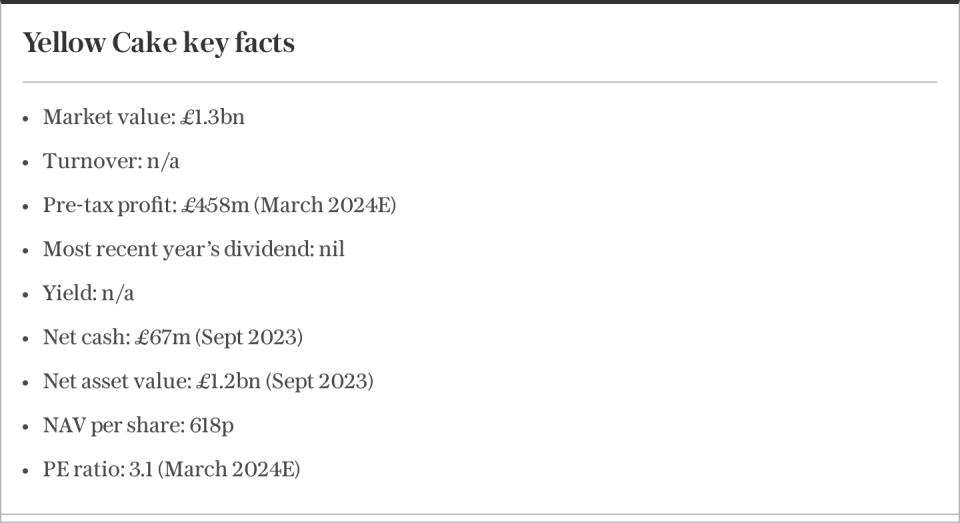This uranium investor appears to be in a sweet spot amid a resurgence in nuclear power

Last week’s first-half results from Yellow Cake read very well, as net asset value shows healthy gains, buoyed by higher uranium prices and well-timed additions to the company’s stockpiles of triuranium octoxide (U3O8) in its specialist warehouses in France and Canada.
But this story is a fast-moving one and further purchases and advances in the commodity price, thanks in no small part to Dubai’s Cop28 summit, mean that net asset value is already higher still.
Yellow Cake could therefore prove to be particularly well-positioned as nuclear power starts to really grab the attention of policymakers.
During the six months from April to September, the value of Yellow Cake’s holdings of U3O8 rose by 56pc, amid a 45pc surge in uranium spot prices to $73.50 per pound and an increase in the company’s physical stock, thanks to purchases from Kazakhstan’s Kazatomprom.
They were funded by February’s £62m capital raise. The activity in the first half took Yellow Cake’s holdings to 20.2m pounds of U3O8 and the end result was a 46pc increase in net asset value (NAV) per share to 618p from 423p (as the higher share count offset some of the increase in the value of the inventory).

That leaves the shares trading at a modest discount to the end-of-half NAV, but the momentum continues to build.
Since the end of the fiscal first half, the uranium price has motored to $81.50 per pound, buoyed by Cop28’s statement of intent to treble nuclear power capacity by 2050, as policymakers scramble for solutions that provide both energy security and help in the drive to net zero (even if environmentalists may despair at the concept that nuclear is now seen as “green”).
Quite how this is to be achieved when no one is currently planning on big increases in uranium capacity remains to be seen.
This is especially true as long-term contracts are already in place for much of global supply, Russia’s output is off limits and a military coup in Niger raises questions there, at least in the near term, about its ability to produce and ship the commodity.
Kazatomprom’s September statement that it will increase output in both 2024 and 2025 reflects how the balance between supply and demand for uranium continues to tighten.
Yellow Cake’s long-term relationship with the Kazakh company feels like a major strategic advantage and management continues to make the most of it.
As noted in this column in October, the Aim-quoted concern asked shareholders for another £103m at the very end of September, so it could buy a further 1.5m pounds of U3O8 from Kazatomprom.
This is in keeping with an agreement that enables Yellow Cake to buy up to $100m (£80m) of uranium every year until 2027 and it will take Yellow Cake’s holdings to 21.7m pounds of U3O8 when the deal closes in the first half of calendar 2024.
Add in the further gains in uranium’s price, adjust for currency movements and the further increases in the share count thanks to the latest round of fundraising, as well as the cash and liabilities on the balance sheet, and Yellow Cake’s NAV on a pro-forma basis is 658p per share. The shares trade at a 10pc discount to that figure.
This may look like a tempting proposition, at least if you think uranium prices are well underpinned.
Investors who think otherwise may fight shy (and it is undeniably easier to talk about boosting capacity and build new reactors than it is to actually do it, as the ongoing delays with the UK’s Hinkley Point C project attest), as may investors who run strict environmental, social and governance screens.
In Questor’s view, Yellow Cake looks to be in a very sweet spot.
Questor says: hold
Ticker: YCA
Share price at close: 595p
Update: Costain
This column is indebted to an eagle-eyed reader, Mr Eccleston, for spotting a blooper in the preliminary study of Costain last month.
We stated that the infrastructure specialist was considering a return to the dividend list for the first time since 2019, when the company had already made is move and declared an interim dividend of 0.4p a share back in September.
Analysts are now forecasting a full-year payment for 2023 of around 1p per share, which equates to a yield of 1.6pc, at the time of writing.
Thankfully, the error does not hole the investment case, as Costain is already delivering on its target, but we apologise nevertheless and thank Mr Eccleston and all readers for their forbearance. Costain could yet continue to build on its new found momentum.
Russ Mould is investment director at the stockbroker AJ Bell
Read the latest Questor column on telegraph.co.uk every Monday, Tuesday, Wednesday, Thursday and Friday from 6am
Read Questor’s rules of investment before you follow our tips


